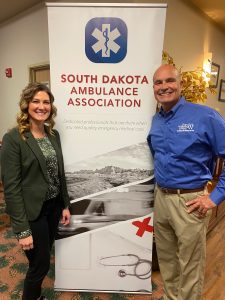CMS Shares GADCS Walkthrough
Walkthrough of the Medicare Ground Ambulance Data Collection System Video
Watch the short sections or the entire video (2:49:23) for an overview of the Medicare Ground Ambulance Data Collection System (GADCS), which includes the questions that selected ground ambulance organizations must respond to when they report under the GADCS. For more information, see Medicare Ground Ambulance Data Collection System.
Reminders About Reporting:
Ground ambulance organizations selected in Year 1 and Year 2:
- Beginning in 2023, you’re required to report cost, utilization, revenue, and other information to CMS within 5 months after your data collection period ends. For example, if you report a data collection period of January 1, 2022 – December 31, 2022, you have a 5-month data reporting period after your data collection periods ended (January 1, 2023 – May 31, 2023) to report data.
- If you haven’t already reported your data and your continuous 12-month data collection period has ended, please report your data to the Medicare Ground Ambulance Data Collection System (GADCS) portal. See Quick Tips on Registration and Requesting Access.
- Organizations that fail to report may be subject to a 10 % payment reduction.
Ground ambulance organizations selected in Year 3 and Year 4:
- You’ll begin collecting data in 2023 and reporting data beginning in 2024.
- You should have received a notification letter from your Medicare Administrative Contractor about this requirement. Notifications were sent to the contact address in the PECOS enrollment record linked to each selected NPI.
- You’re required to report your organization’s initial data requirement (start date of your data collection period and contact information).
- If you haven’t already reported your organization’s initial data requirements, provide the information at this website: palmettogba.com/GADCS_initial_
submission.


 Association’s annual conference on February 12, 2022.
Association’s annual conference on February 12, 2022.